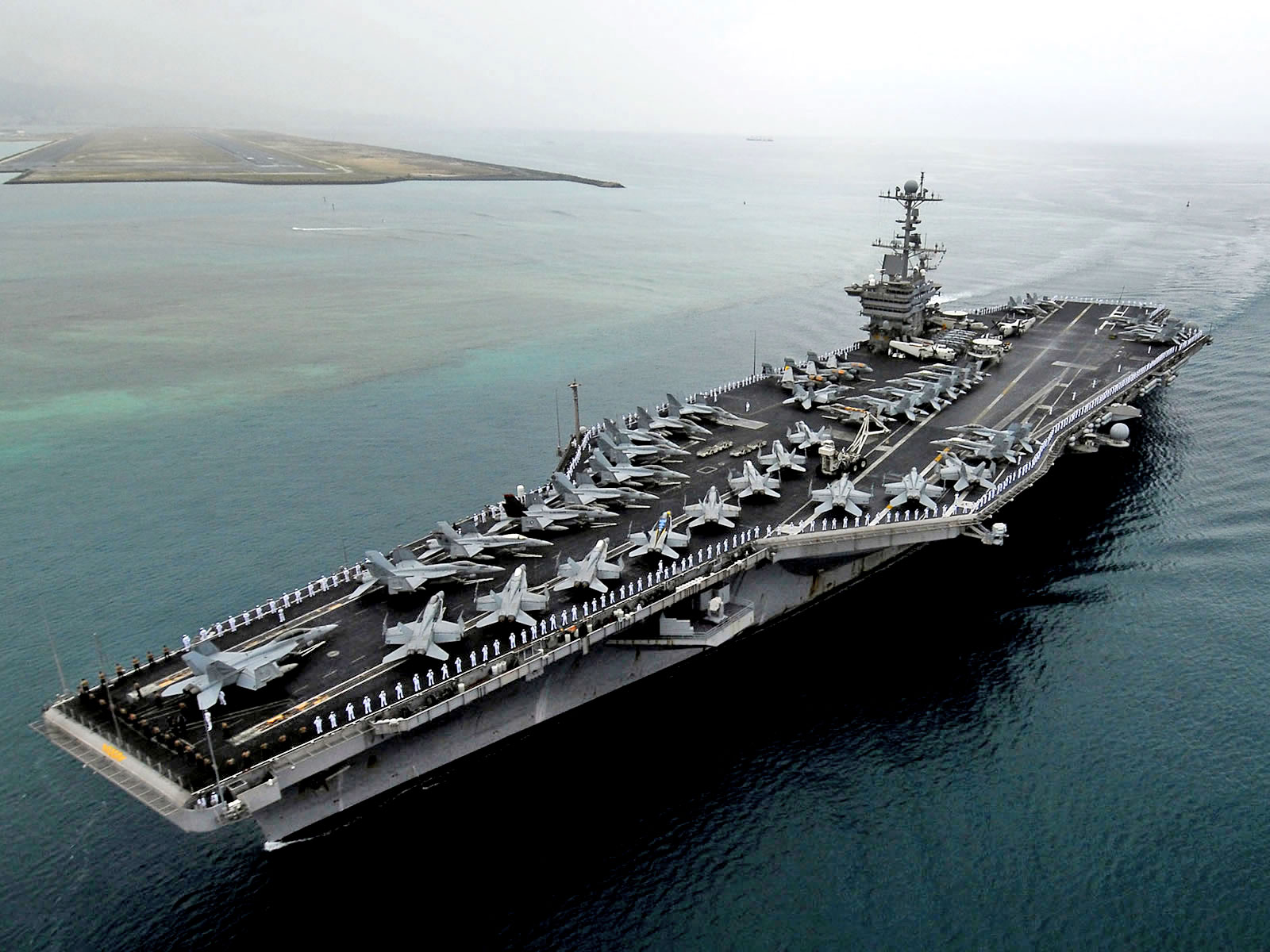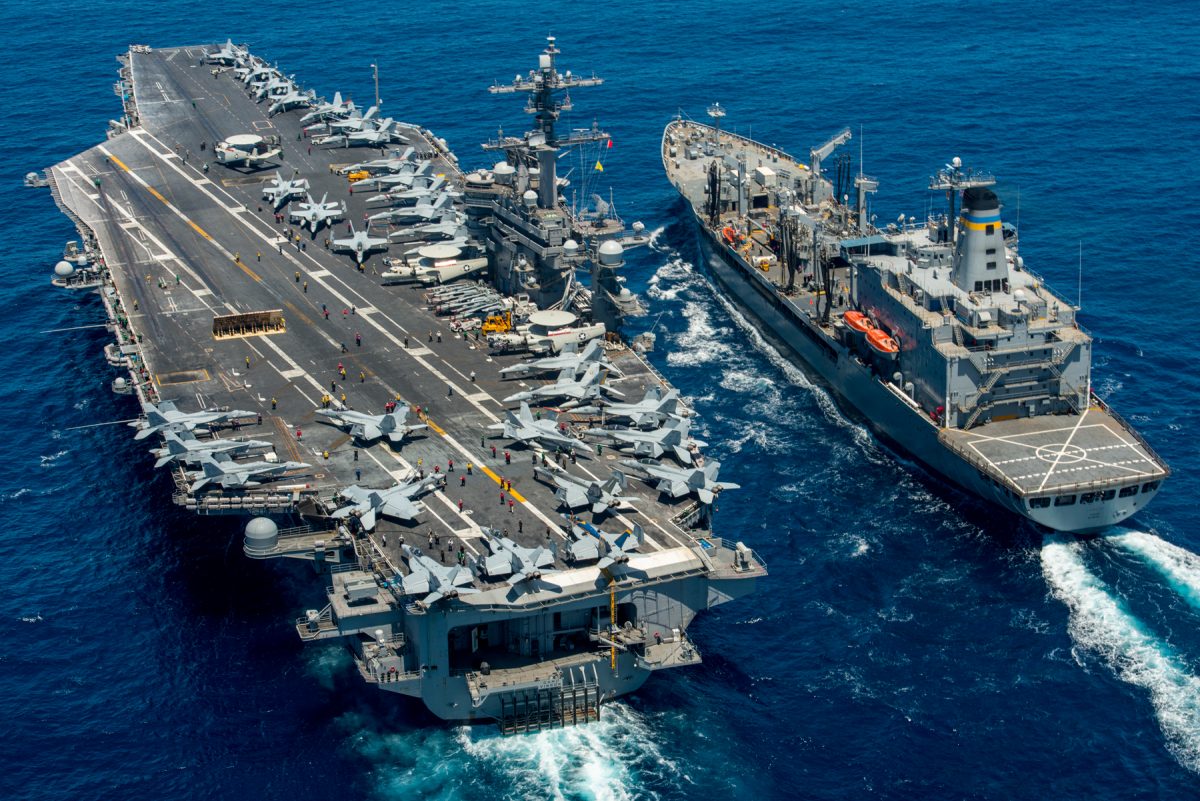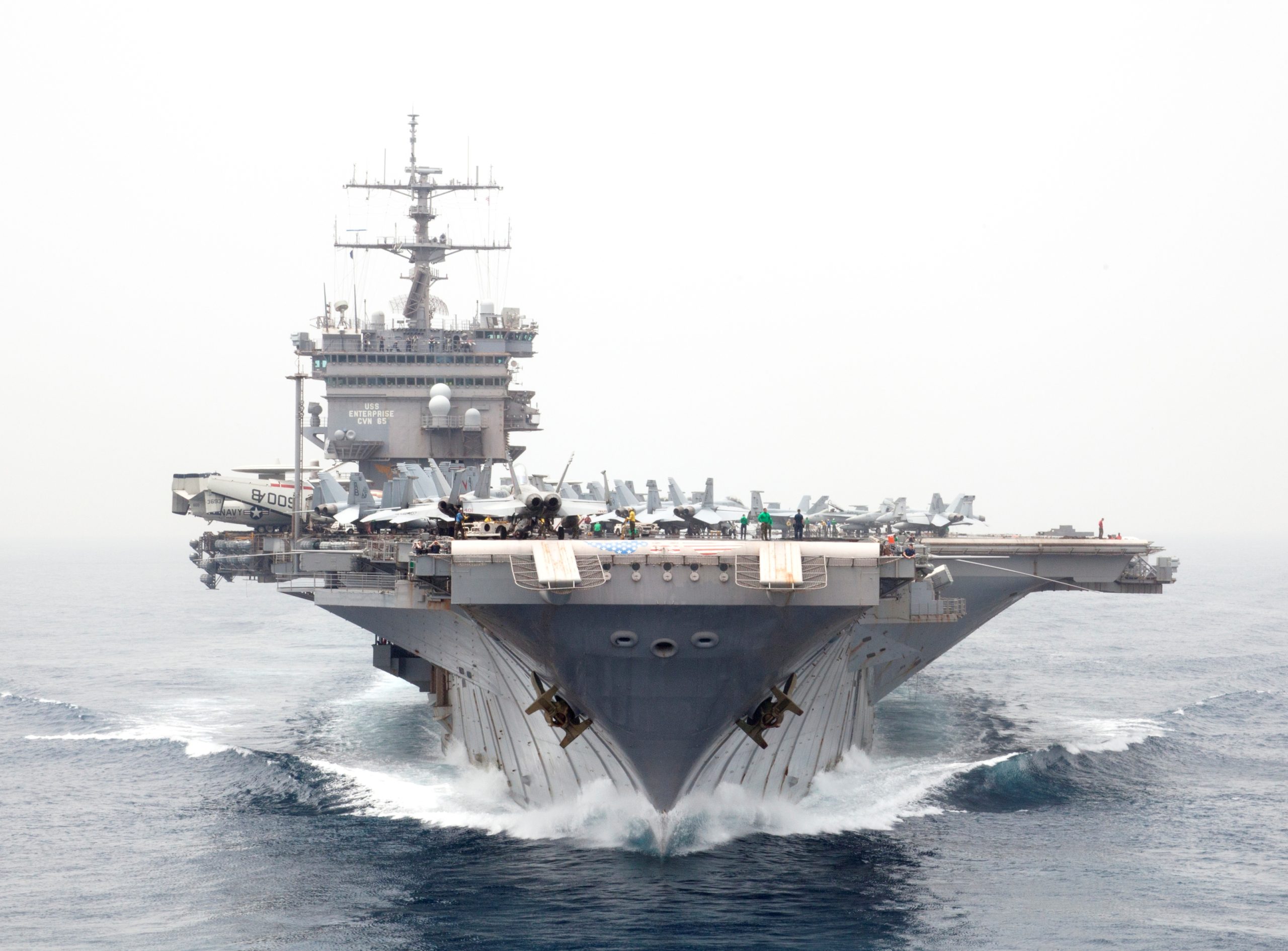The aircraft carrier, often dubbed the “Queen of the Seas,” represents a pinnacle of naval engineering and military power projection. Among these colossal vessels, one name stands out as the current reigning champion of the world’s biggest aircraft carriers: the USS Gerald R. Ford (CVN-78). This marvel of maritime technology is not only the largest but also the most technologically advanced aircraft carrier ever constructed. In this article, we will delve into the USS Gerald R. Ford’s awe-inspiring specifications, its capabilities, and its role in the United States Navy. Additionally, we will take a closer look at some other noteworthy giants in the realm of aircraft carriers.

The USS Gerald R. Ford: A Marvel of Modern Engineering
The USS Gerald R. Ford, CVN-78, is a testament to human ingenuity and military prowess. Commissioned in 2017, it is the lead ship of the Ford-class aircraft carriers, a new breed of carriers designed to push the boundaries of what is possible on the high seas.

- Unprecedented Displacement
Weighing in at over 100,000 tons, the USS Gerald R. Ford’s sheer size is a sight to behold. Its colossal displacement makes it the world’s largest aircraft carrier, dwarfing many other vessels in comparison. This impressive weight enables it to carry a formidable arsenal of aircraft and weaponry.

- Air Power on Steroids
The carrier boasts a massive flight deck capable of accommodating more than 90 aircraft, showcasing the true might of U.S. naval aviation. Among the aircraft it can host are the cutting-edge F-35C Lightning II fighter jets, E-2D Hawkeye early warning aircraft, and MH-60R Seahawk helicopters. The Ford’s air wing is a force to be reckoned with, enabling it to project power across the globe.
- Formidable Defensive Armament
Equipped with an array of defensive weapons, the USS Gerald R. Ford can protect itself and its strike group. This includes the RIM-162 Evolved SeaRAM missiles, which provide defense against anti-ship missiles and enemy aircraft. Additionally, the Phalanx Close-In Weapon Systems (CIWS) add an extra layer of protection against incoming threats, making the Ford a virtually impregnable fortress on the water.
Versatility and Mission Capabilities
The USS Gerald R. Ford’s versatility extends to its mission capabilities. As a multi-role aircraft carrier, it can be deployed for a wide range of tasks, underscoring its importance in modern naval operations.
- Power Projection
One of its primary roles is power projection. The carrier serves as a floating airfield, enabling it to launch air strikes deep into enemy territory, thereby extending the reach of U.S. military might. The presence of F-35C Lightning II fighter jets enhances its ability to conduct precision strikes and maintain air superiority.
- Maritime Security
Beyond power projection, the USS Gerald R. Ford is also tasked with conducting maritime security patrols. These patrols help safeguard vital sea lanes, maintain regional stability, and ensure the free flow of maritime trade. The carrier’s imposing presence alone serves as a deterrent to potential threats.
- Humanitarian Response
In times of humanitarian crises, the USS Gerald R. Ford can quickly shift its mission focus to provide critical assistance. The carrier’s extensive medical facilities and ability to transport aid and personnel make it a valuable asset for disaster relief and humanitarian operations.
Notable Contenders: Other World’s Biggest Aircraft Carriers
While the USS Gerald R. Ford takes the top spot, it’s worth noting that several other aircraft carriers around the world are not far behind in terms of size and capability. Some of these notable contenders include:
- Nimitz-class Aircraft Carriers (CVN-68 to CVN-77) – United States Navy: The Nimitz-class carriers have been a backbone of the U.S. Navy for decades, with each vessel capable of carrying over 60 aircraft. These carriers have played a pivotal role in U.S. military operations and global power projection.
- Queen Elizabeth-class Aircraft Carriers (HMS Queen Elizabeth and HMS Prince of Wales) – Royal Navy: The Queen Elizabeth-class carriers are the pride of the Royal Navy. They are capable of carrying a formidable air wing and represent the United Kingdom’s commitment to maintaining a global naval presence.
- Liaoning (16) and Shandong (17) – People’s Liberation Army Navy: China’s Liaoning and Shandong aircraft carriers mark the nation’s entry into the realm of large, modern carriers. These vessels have the capacity to carry a significant number of aircraft and have quickly become a symbol of China’s growing naval power.

Conclusion
The USS Gerald R. Ford stands as the pinnacle of naval engineering and military might, a shining example of the United States’ commitment to maintaining its status as a global maritime superpower. As the world’s largest aircraft carrier, it is a force to be reckoned with, capable of performing a wide range of missions, from power projection to humanitarian response. In an era of ever-evolving military technology, the USS Gerald R. Ford remains a symbol of naval supremacy, ensuring that the seas continue to be a critical theater of global security and diplomacy.




